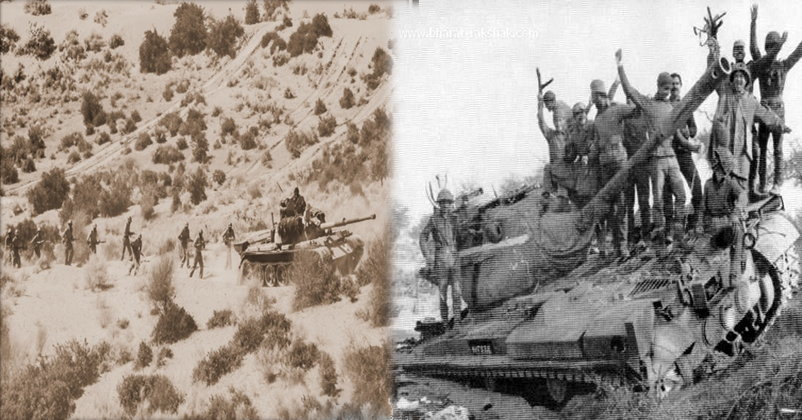"Battle of Longewala 1971: Triumph in the Desert Sands - Unraveling the Heroic Saga of India's Victory"
Total Views |

The Battle of Longewala in 1971 was a result of the larger Indo-Pakistani War that took place that year. The war was triggered by the political and military tensions between India and Pakistan, primarily centered around the independence movement in East Pakistan (present-day Bangladesh).
In March 1971, the Pakistani Army launched a brutal crackdown in East Pakistan, leading to a massive influx of refugees into India. This humanitarian crisis, along with the political unrest in East Pakistan, prompted India to support the Bengali independence movement.
As the conflict escalated, both India and Pakistan mobilized their armed forces along the international border and the western front. The Pakistani Army planned to launch a major offensive in the western sector, aiming to capture Indian territory and divert Indian forces from the eastern front.
In this context, the Battle of Longewala unfolded. The Pakistani Army’s 51st Infantry Brigade, supported by tanks and artillery, was tasked with capturing the Indian outpost at Longewala, in the Thar desert of Rajasthan. The objective was to establish a bridgehead in the area and pave the way for further advances into Indian territory.
On the Indian side, the 23rd Battalion, Punjab Regiment, under the command of Major Kuldip Singh Chandpuri, was stationed at Longewala. The Indian soldiers were aware of the Pakistani offensive and had prepared their defenses accordingly.
The Indian outpost, under the command of Major Kuldip Singh Chandpuri, consisted of only 120 soldiers and a few outdated antitank weapons. They were heavily outnumbered and outgunned by the Pakistani forces, which had around 2,000 soldiers and 45 tanks.
The battle was initiated by the Pakistani forces on the night of December 4th, 1971, when they launched a surprise attack on the Indian outpost. The Indian soldiers, though heavily outnumbered and outgunned, fought back with determination and resourcefulness. Throughout the night, the Indian soldiers engaged the Pakistani tanks, destroying several of them with their anti-tank weapons. They also called in air support from the Indian Air Force, which carried out airstrikes on the Pakistani tanks and artillery positions.
Despite the overwhelming odds, the Indian soldiers held their ground and inflicted heavy casualties on the Pakistani forces. By morning, the Pakistani attack had been repelled, and they were forced to retreat. The Battle of Longewala was a resounding victory for the Indian Army, as they successfully defended their outpost against a much larger and better-equipped enemy force.
The bravery and determination displayed by the Indian soldiers during the Battle of Longewala became a symbol of India's military prowess and resilience. It also highlighted the importance of strategic planning, resourcefulness, and effective utilization of available resources in warfare.
The Battle of Longewala was a crucial part of the larger conflict between India and Pakistan in 1971. It demonstrated the Indian Army’s ability to effectively defend its positions against a much larger enemy force. The battle also had significant strategic implications, as it thwarted the Pakistani Army’s plans to establish a bridgehead in the area and provided a morale boost to the Indian forces.
Overall, the battle was a result of the ongoing Indo-Pakistani War and the broader geopolitical tensions between the two countries during that period. It was a testament to the bravery and resilience of the Indian soldiers and their commitment to defending their territory.

